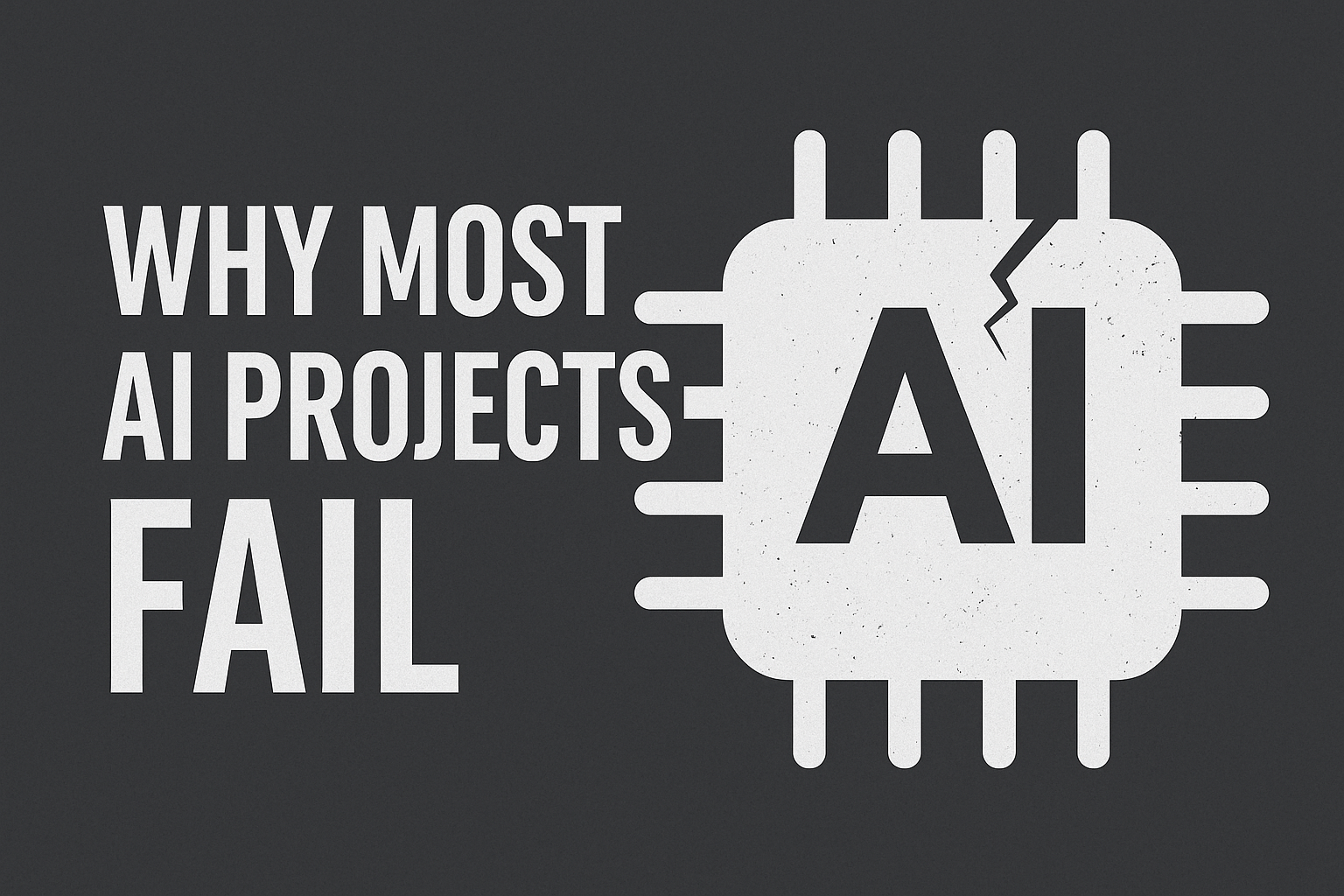Why Most AI Projects Fail

AI is everywhere - from sales and marketing to operations and customer service. But for all the hype, most AI projects in small and medium-sized businesses don’t succeed.
Not because the technology is flawed.
But because the approach is.
At Sixth Summit, we’ve seen how easy it is to waste time, energy, and budget on AI initiatives that go nowhere. The good news? The patterns are predictable and preventable.
Here are the three most common reasons AI projects fail inside SMEs, and what you can do differently:
1. Starting Without a Clear Problem
One of the biggest mistakes we see is teams diving into AI without a specific use case.
They say things like “We should be using AI” or “Let’s build a chatbot” but they don’t tie it to a pain point in the business.
This leads to vague projects with no measurable outcome, no urgency, and ultimately, no adoption.
How to fix it:
Start with a real business process.
Ask: “Where are we wasting time, duplicating effort, or making manual decisions that could be automated?”
When the use case is grounded in a real problem, like triaging support tickets, building technical docs, or generating weekly analyses, success becomes measurable.
2. Overengineering from Day One
Another common pitfall? Trying to build a perfect, scalable AI solution from the start.
Teams get lost in platform evaluations, months-long builds, or tech stacks they don’t understand. By the time something launches (if it ever does), the urgency is gone or the process has already changed.
How to fix it:
Think of your first AI implementation like a prototype, not a product.
Build the “minimum viable agent.” Launch a version that solves one small problem for one part of the team.
From there, you can iterate, improve, and expand based on feedback and outcomes.
Small wins build momentum.
3. No Internal Ownership
Even when the idea and execution are strong, AI projects often fail due to lack of internal ownership.
If no one is responsible for the rollout, training, and measurement of success, the tool gets ignored. It doesn’t get maintained. Eventually, it’s abandoned.
How to fix it:
Assign someone to be the internal “AI lead” — even if it’s just a few hours per week.
That person should:
Understand the business goal of the AI tool
Gather feedback from users
Track results and ROI
Own improvements or iterations
Without a champion, AI becomes shelfware.
The Bottom Line
AI isn’t magic. It’s a tool.
If you treat it like a shiny object, it’ll disappoint. If you treat it like an employee — with a job to do, metrics to hit, and an owner to manage it — it can transform how your business operates.
Start with one clear use case.
Assign one clear owner.
Aim for one small but measurable win.
That’s how you build momentum and unlock real ROI.